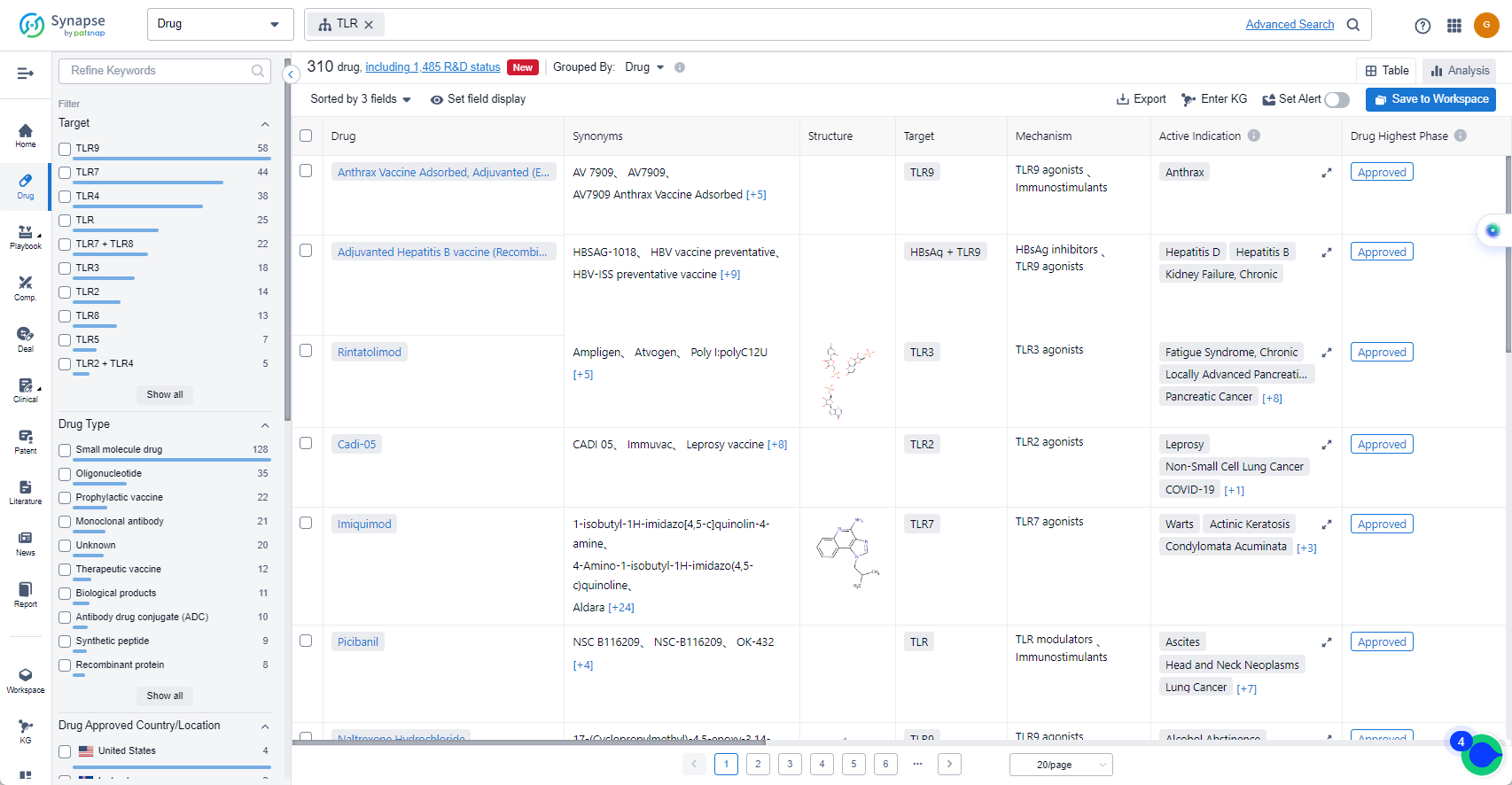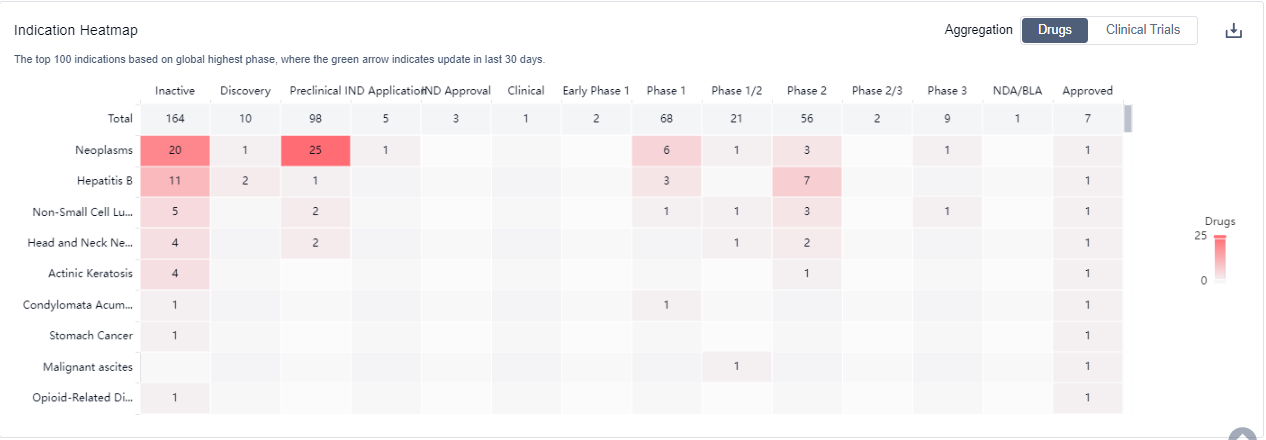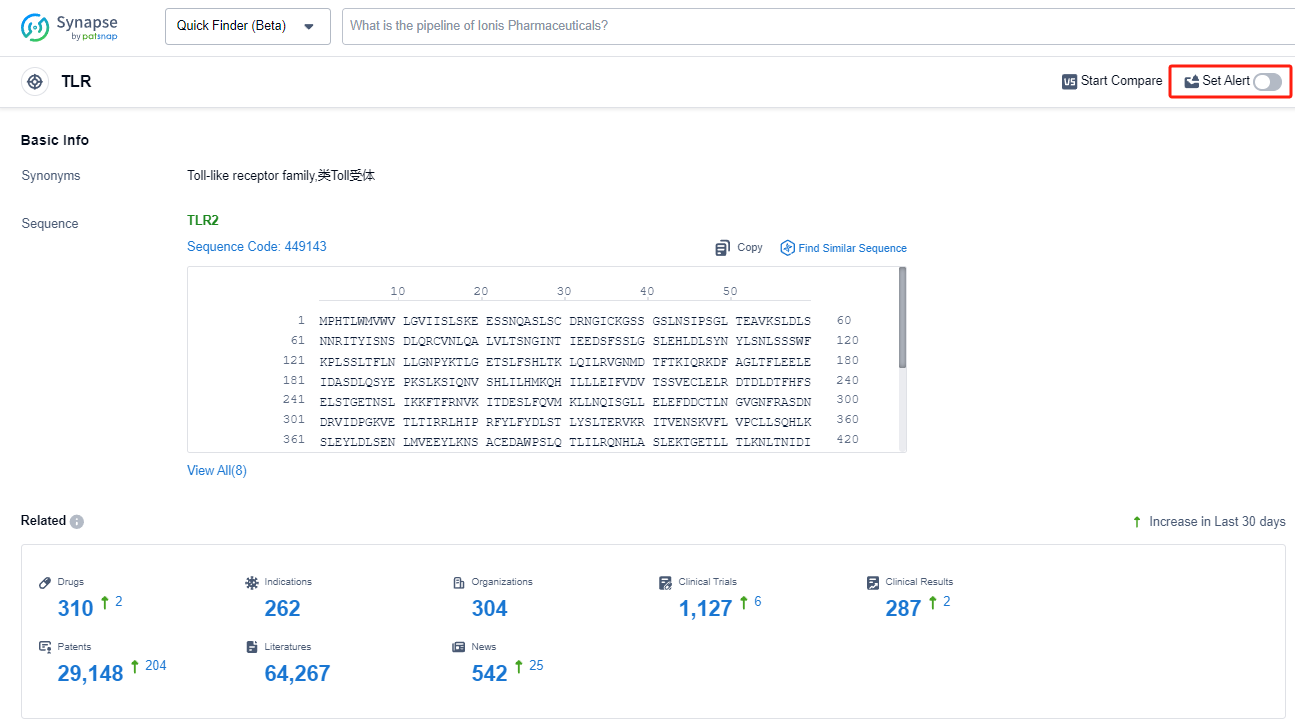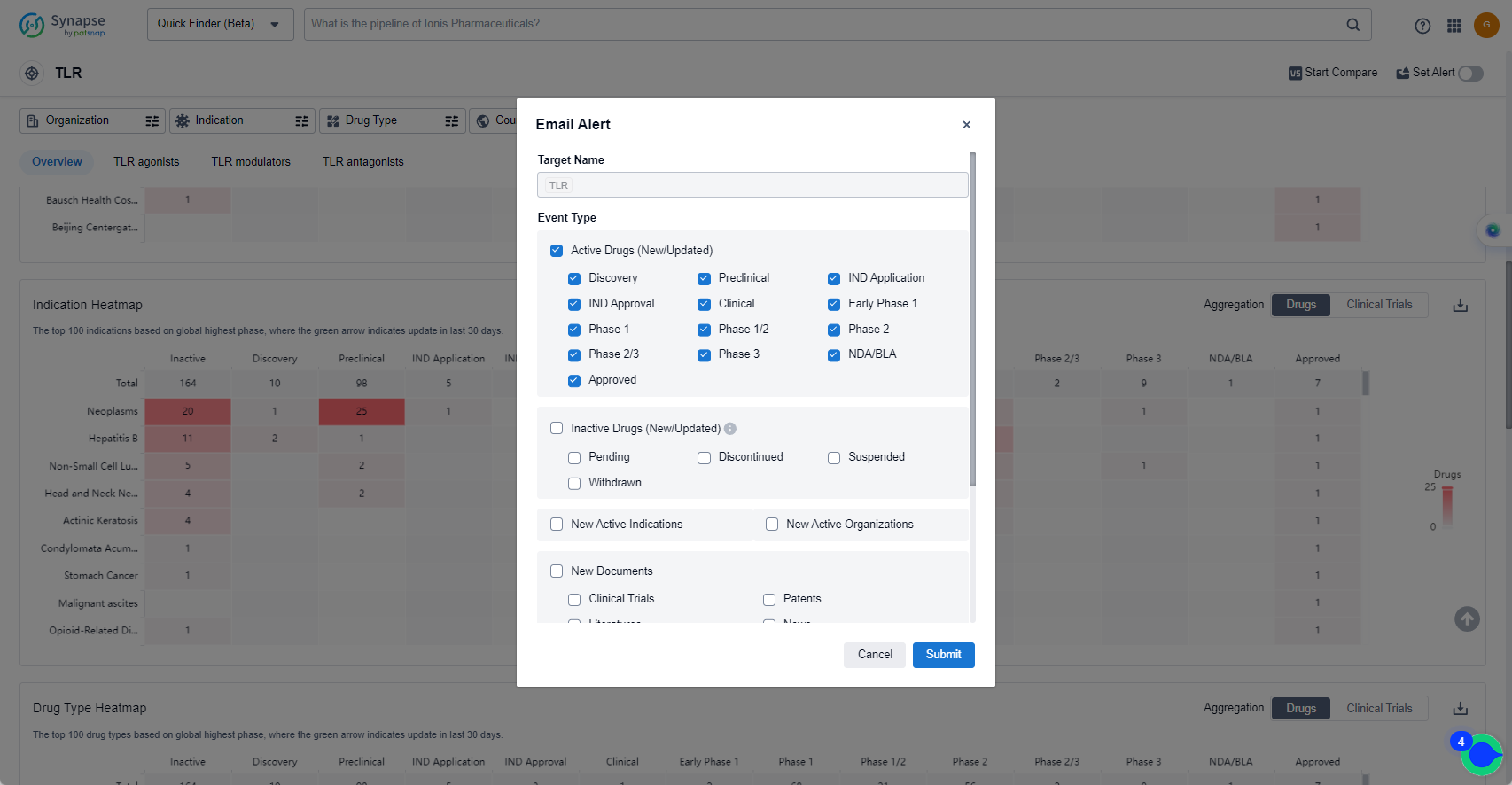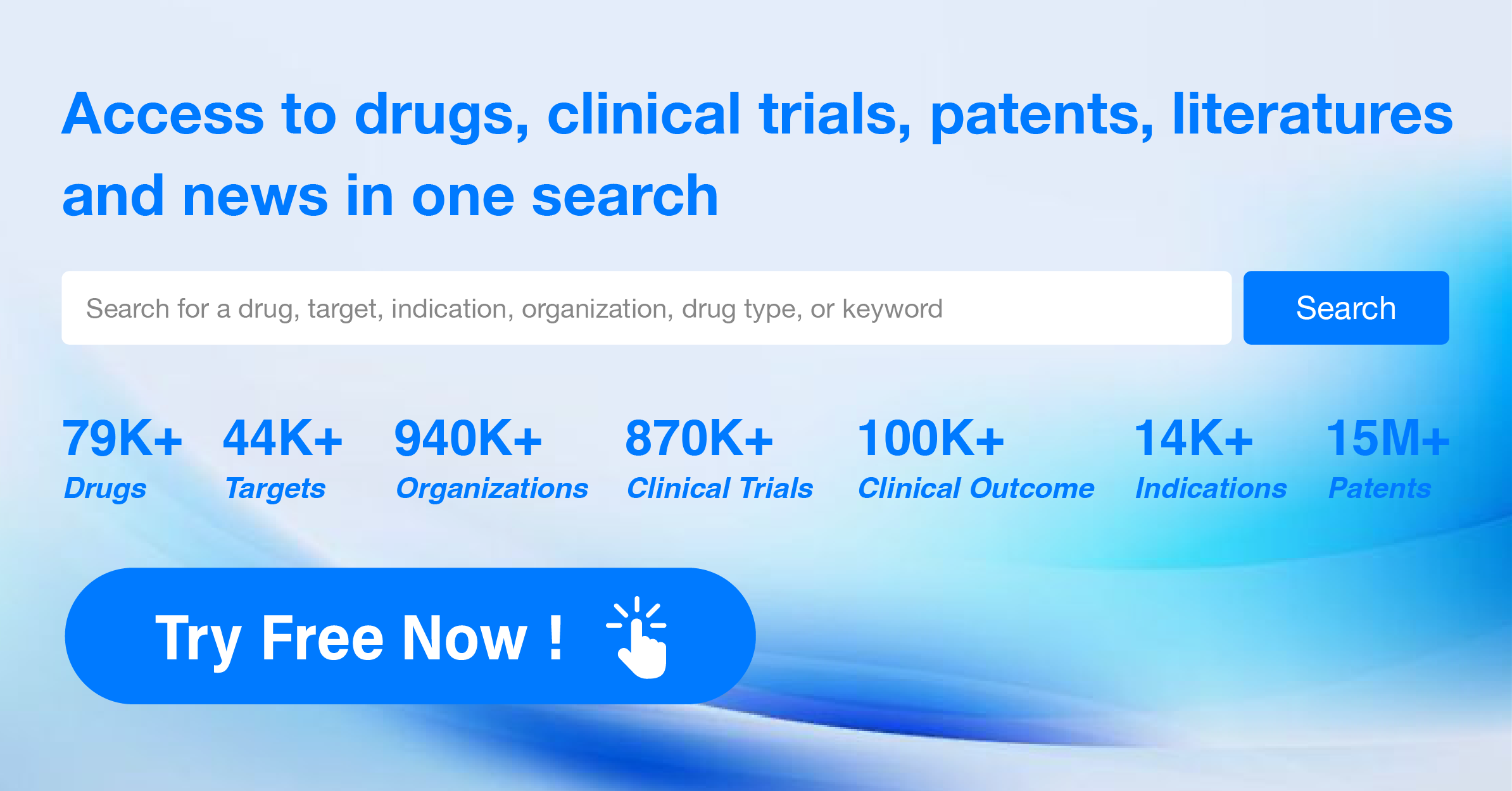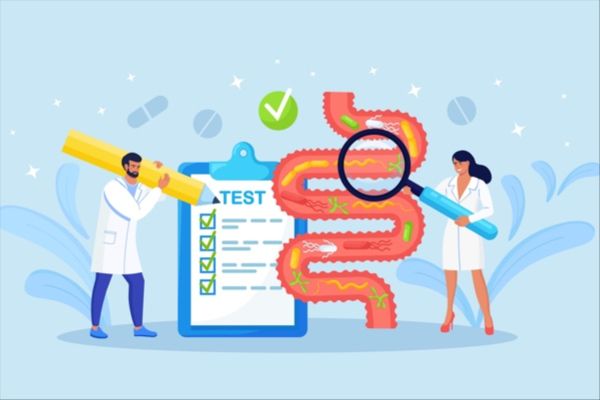Exploring TLR agonists: What They Are and How to Keep Up with the Latest Advances
Toll-like receptors (TLRs) are a crucial component of the innate immune system in the human body. They play a vital role in recognizing and responding to various pathogens, such as bacteria, viruses, and fungi. TLRs are present on immune cells and other cell types, including epithelial cells. When TLRs detect the presence of pathogens, they initiate a signaling cascade that triggers the release of pro-inflammatory cytokines and chemokines, leading to an immune response against the invading pathogens. TLRs also contribute to the activation of adaptive immunity by promoting antigen presentation and the production of antibodies. Understanding TLRs' function is essential for developing therapeutic interventions and vaccines targeting infectious diseases and immune disorders.
The analysis of the target TLR from various perspectives provides valuable insights into the current competitive landscape and future development. Roche Holding AG emerges as a key player with multiple drugs in different phases of development. Indications such as Neoplasms, Hepatitis B, and Non-Small Cell Lung Cancer have approved drugs, indicating the potential of target TLR in these therapeutic areas. The presence of various drug types, including small molecule drugs, vaccines, oligonucleotides, monoclonal antibodies, and cell therapies, highlights the diversity of approaches in targeting TLR. The involvement of countries like the United States, European Union, China, and Japan signifies global interest and progress in the target TLR. China, in particular, shows promising progress in drug development. Overall, the target TLR presents a competitive landscape with opportunities for innovation and growth in the pharmaceutical industry.
How do they work?
TLR9 agonists are substances that activate the Toll-like receptor 9 (TLR9) in the immune system. Toll-like receptors are a type of protein found on the surface of immune cells, and they play a crucial role in recognizing and responding to pathogens such as bacteria and viruses.
When TLR9 agonists bind to the TLR9 receptor, they trigger a signaling cascade that leads to the activation of immune cells, such as dendritic cells and B cells. This activation stimulates the immune response, leading to the production of pro-inflammatory cytokines, chemokines, and the maturation of immune cells.
From a biomedical perspective, TLR9 agonists have been studied for their potential therapeutic applications in immunotherapy and vaccine development. By activating the immune system, TLR9 agonists can enhance the body's ability to fight off infections and may also have anti-tumor effects. They are being investigated as adjuvants in vaccines to improve their effectiveness by boosting the immune response.
Overall, TLR9 agonists are important tools in biomedical research and hold promise for the development of novel immunotherapies and vaccines.
List of TLR Agonists
The currently marketed TLR agonists include:
- Anthrax Vaccine Adsorbed, Adjuvanted (Emergent BioSolutions)
- Adjuvanted Hepatitis B vaccine (Recombinant)(Dynavax Technologies Corp.)
- Rintatolimod
- Cadi-05
- Imiquimod
- Naltrexone Hydrochloride
- Entolimod
- Cobitolimod
- Lefitolimod
- Lyophilised attenuated group A Streptococcus (Protara Therapeutics)
For more information, please click on the image below.
What are TLR agonists used for?
TLR agonists are being investigated as adjuvants in vaccines to improve their effectiveness by boosting the immune response. For more information, please click on the image below to log in and search.
How to obtain the latest development progress of TLR agonists?
In the Synapse database, you can keep abreast of the latest research and development advances of TLR agonists anywhere and anytime, daily or weekly, through the "Set Alert" function. Click on the image below to embark on a brand new journey of drug discovery!
